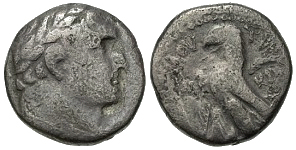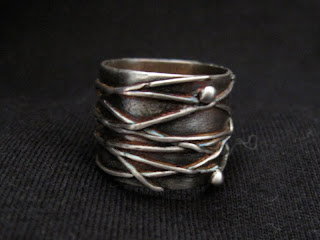Monday, April 26, 2010
Cedis Quek Collection (Precious Stones - Necklace)
Cedis Quek Collection (Black Beauty Collection)
Cedis Quek Collection (High Quality Necklaces)
fresh water pearls and precious stones.
Tuesday, April 20, 2010
Gallery: Pendants
Gallery: Unique Pieces
Ring Gallery (With Crystals)
Broad RIng with clear crystal
Ring with green crystal
Status: Sold
Saturday, April 17, 2010
Judas Silver (Reading Article)
| Judas' 30 Pieces of Silver - Matthew 26:14-15 |

The Bible does not tell the date of the Crucifixion, but based on Biblical clues, the Jewish calendar and astronomical evidence many scholars believe it was Friday, April 3, 33 A.D.
John the Baptist began his ministry in 28 or 29 A.D. and the Gospel of John points to three separate Passovers during Jesus' ministry. Jesus was executed on the orders of Pontius Pilate, the Roman prefect of Judaea from 26 to 36 A.D. This limits the years to between 30 and 36 A.D.
John P. Meier's A Marginal Jew cites 7 April 30 A.D., 3 April 33 A.D., and 30 March 36 A.D. as astronomically possible Friday Nisan 14 dates during this period. Isaac Newton, using the crescent of the moon, determined the year was 34 A.D. but John Pratt argued that Newton made a minor computation error and 33 A.D. was the accurate answer using Newton's method. Using similar computations, in 1990 astronomer Bradley Schaefer arrived at Friday, April 3, 33 A.D. A third method, using a completely different astronomical approach (consistent with Apostle Peter's reference to a "moon of blood" in Acts 2:20) based on a lunar Crucifixion darkness and eclipse model arrives at the same date, Friday, April 3, 33 A.D.
History of Silver (Facts)
Silver Historical Background
Silver has attracted man’s fascination for many thousands of years. Ancient civilizations found silver deposits plentiful on or near the earth’s surface. Relics of these civilizations, include jewelry, religious artifacts, and food vessels formed from the durable, malleable metal. This metal took on near mystical qualities in marking important historical milestones throughout the ages, and served as a medium of exchange. The Mesopotamian merchants were doing just that as early as 700 BC.
In 1792, silver assumed a key role in the United States monetary system when Congress based the currency on the silver dollar, and its fixed relationship to gold. Silver was used for the nation’s coinage until its use was discontinued in 1965. The dawn of the 20th century marked an important economic function for silver, that of an industrial raw material.
Today, silver is sought as a valuable and practical industrial commodity, as well as an appealing investment precious metal. Many countries now issue silver bullion coins, among them the Unites States, Canada and Mexico. Private issue silver bullion is also available from select private mints.
Although silver is relatively scarce, it is the most plentiful and least expensive of the precious metals. The largest silver producing countries are Mexico, Peru, the United States, Australia and Chile. Sources of silver include; silver mined directly, silver mined as a by-product of gold, copper, lead and zinc mining, and silver extracted from recycled materials, primarily used photographic materials. Today, silver bullion stocks make up a significant component of silver supply.
The American Eagle Bullion program was launched in 1986 with the sale of gold and silver bullion coins. Platinum was added to the American Eagle Bullion family in 1997. A bullion coin is a coin that is valued by its weight in a specific precious metal.
Silver Uses
Although silver is relatively scarce, it is the most plentiful and least expensive of the precious metals. The largest silver producing countries are Mexico, Peru, the United States, Australia and Chile. Sources of silver include; silver mined directly, silver mined as a by-product of gold, copper, lead and zinc mining, and silver extracted from recycled materials, primarily used photographic materials. Today, silver bullion stocks make up a significant component of silver supply.
The demand for silver comes primarily from three areas; industrial uses, jewelry and silverware, and photography. These industries represent 95 percent of annual silver consumption. Silver’s superior properties make it a highly desirable industrial component in manufactured products. Silver’s artistic beauty and status make it one of the most romantic and sought after precious metals.
Diversity is silver’s primary asset. Its unique properties include beauty, strength, sensitivity to light, malleability and ductility, electrical and thermal conductivity, reflectivity and the ability to endure extreme temperature changes. These properties allow groundbreaking research to be conducted by scientists and engineers that effect the way we live.
Silver more than other precious metals, has significant demand rooted in sectors as diverse as imaging, electronics, jewelry, coinage, superconductivity and water purification. For this reason, silver is no longer known as just a precious metal, a store of value, a work of art or an industrial metal. It is all of these. Today silver is indispensable, working all around us to improve the quality of our lives.














































